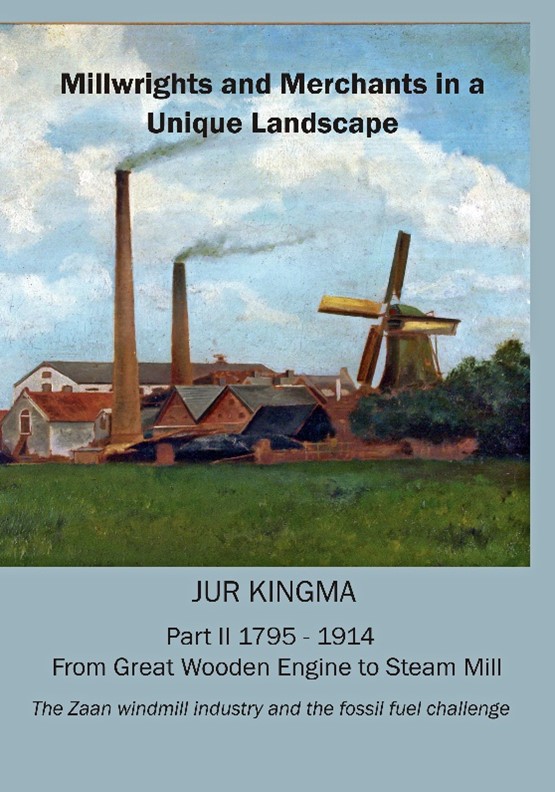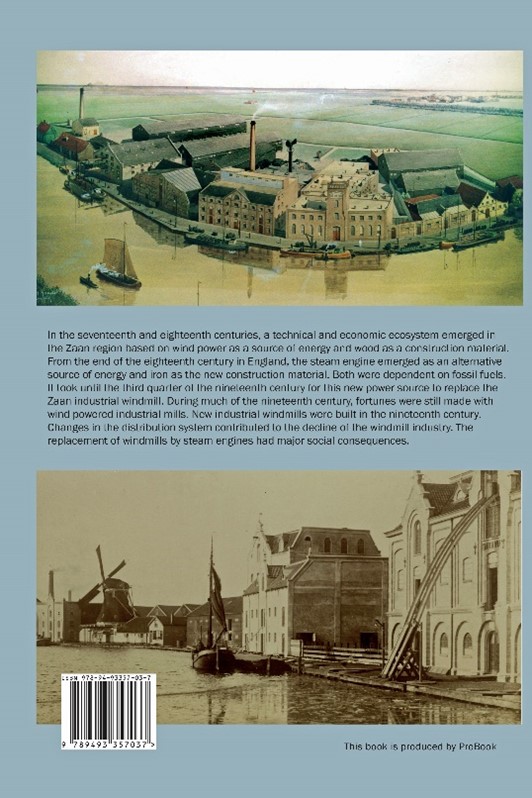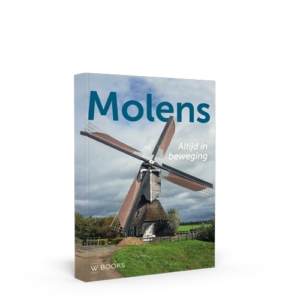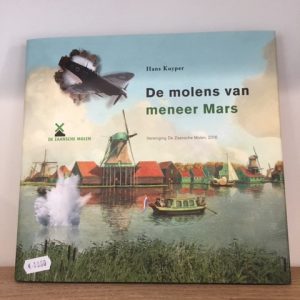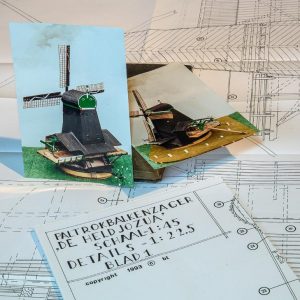Beschrijving
From Great Wooden Engine to Steam Mill
The Zaan windmill industry and the fossil fuel challenge 1795-1914
Part 2 of Millwrights and Merchants in a Unique Landscape
Four and a half centuries of industrial history in the Zaan region
Door Jur Kingma
In the seventeenth and eighteenth centuries, a technical and economic ecosystem emerged in the Zaan region based on wind power as a source of energy and wood as a construction material. From the end of the eighteenth century in England, the steam engine emerged as an alternative source of energy and iron as the new construction material. Both were dependent on fossil fuels. It took until the third quarter of the nineteenth century for this new power source to replace the Zaan industrial windmill. During much of the nineteenth century, fortunes were still made with wind-powered industrial mills. New industrial windmills were built in the nineteenth century. Changes in the distribution system contributed to the decline of the wind mill industry. The replacement of wind mills by steam engines had major social consequences.
More than a quarter century ago I wrote Those Great Wooden Engines: Four Centuries of Industrial Windmills in the Zaanstreek. Research didn’t stop. Since that publication many new discoveries were made by a number of historians. This is part 2 of Merchants and Merchants in a Unique Landscape, Four and a half centuries of industrial history in the Zaan region. The English translation of a book in Dutch from 2019 that summarizes the new insights in the industrial history. There are new chapters, like the social implications of the transition from natural power -wind and water – to power from fossil fuels.
In the original Dutch book the continuity over the centuries was the central theme. In this translated and updated part 2 the discontinuity caused by the introduction of fossil fuels is the main theme. By the successful adaptation to the challenge of the fossil fuels a new level of continuity emerged.

